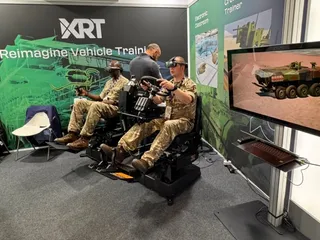Robot Assisted Surgery: Why There Should Now Be a Revolution to Push For This Technology
Contact Our Team
For more information about how Halldale can add value to your marketing and promotional campaigns or to discuss event exhibitor and sponsorship opportunities, contact our team to find out more
The Americas -
holly.foster@halldale.com
Rest of World -
jeremy@halldale.com
Jeff Berkley, PhD, examines why robot-assisted surgery and simulation training has the very real potential to revolutionize healthcare, by boosting quality while cutting overall costs.
As recently reported in The Wall Street Journal, The New York Times, and Bloomberg, there is a controversy brewing over robotic surgery and whether it is superior to alternative surgical approaches. Robotic training practices have also been questioned and it has been debated whether surgeons are receiving enough supervised cases before flying solo.
What is surprising is that few people are picking up on a larger issue that most supervised training still takes place on patients. This is not unique to robotics, but is commonplace for surgery overall. However, with the technological advances that come with robotics we certainly might expect training alternatives that would minimize our reliance on animals and patients for surgical education. After all, military and commercial pilots undergo hundreds of simulation training hours before they fly actual planes. Shouldn’t our robot-assisted surgeons take advantage of similar technologies?
In full disclosure, I founded Mimic Technologies, a surgery simulation company, to address this very problem back in 2001. So it should be noted that I have a vested interest in the adoption of surgery simulation. I have been building medical simulators since 1990, when I began my journey towards a PhD, and I have been focused on robotic surgery simulation since 2003. I freely profess that I am a very strong proponent of robotic surgery and its benefits when coupled with simulation. My hope is that my background allows me to offer a unique perspective.
See one, do one, teach one - that’s the classic model of surgical training practiced in medical schools, teaching hospitals, and clinics worldwide.
Problem is, not every MD has the finely honed motor skills and 3-D spatial reasoning needed for many delicate operations. And, while the human hand is sensitive and subtle beyond comprehension, the hand's sheer size makes it little better than a blunt instrument when considered in the context of the precise surgical procedures that increasingly require microsurgical precision.
Few will argue against the benefits of minimally invasive surgery (MIS) over “open” surgery, where large incisions are used to access internal organs. With MIS, “key-hole” incisions are used with specialized instruments to reach biological structures. As a result, recovery time is far shorter and much less painful. And when the patient’s reduced hospital stay is taken into account, MIS is a very cost-effective option.
The real challenge is learning to perform minimally invasive procedures. The steep learning curve partially explains why in recent years nearly 90% of all surgical procedures were done in an open fashion.
For example, it can take a new surgeon numerous surgeries, sometimes hundreds, to master typical MIS gallbladder removal, or laparoscopic cholecystectomy, which is now the standard for this relatively straightforward surgery. The difficulty of MIS increases significantly in the case of more-complex procedures, such as prostate removal.
Prostatectomy is challenging, as it involves intricate cutting to remove cancerous tissues without severing difficult-to-see nerves that control bladder and erectile function. In fact, a laparoscopic approach to prostatectomy is so challenging that only a handful of surgeons around the world have mastered it. Yet nearly 90% of all prostatectomies are now done with the assistance of the robot.
With robot-assisted surgery, the surgeon guides miniature motorized “wristed” instruments from a remote console, rather than manipulating “straight wristed” laparoscopic tools directly by hand as with conventional MIS. Robotics therefore allows surgeons to approach tissue from angles that aren't possible with laparoscopic surgery. Robotics also allows the surgeon's motion to be scaled so that large hand movements correspond to small instrument motion. In addition, hand tremor can be filtered out to allow for increased precision. A high-resolution 3-D view of the surgery is also standard in robotics, compared with the flat 2-D view that is typically found in MIS.
A less obvious but potentially even more significant advantage is that the robotic computer-mediated interface lends itself to virtual reality (VR) training. In a manner similar to flight simulation, a simulated environment is ideal for learning to control the robot. VR training also has the potential to introduce surgeons to a wide variety of surgical scenarios before they ever cut into a patient.
In other words, surgeons can climb the learning curve on simulated patients without risking injury to flesh-and-blood humans. Although the instrument costs are higher, the comparative ease of learning robotics does allow surgeons to reach expert levels of performance faster than with traditional MIS. A recent study has shown that a rigorous simulation curriculum can enable surgeons to perform a hysterectomy, or removal of the uterus, at expert levels on their very first case. This study, among others, emphasizes the real potential for training and testing of surgeons through simulation prior to live surgery.
Granted, the challenge of creating surgery simulators is greater than it is for flight simulation and the industry is still in its infancy. Just the same, robot-assisted surgery and simulation training is already helping address the challenge of increasing the adoption of minimally invasive procedures. This technology has just begun to change the way surgery is developed, taught, and performed. It has the very real potential to revolutionize healthcare, by boosting quality while cutting overall costs.
About the Author
Jeff Berkley has a PhD in mechanical engineering with a bachelor’s of science and master’s degree in biomedical engineering. Jeff also served as a medical corpsman in the Naval Reserves. Jeff is the founder and CEO of Mimic Technologies, which began selling da Vinci robotic simulators in January of 2007. Intuitive Surgical licensed Mimic’s software and began selling Mimic’s surgery simulation software in December of 2010.


